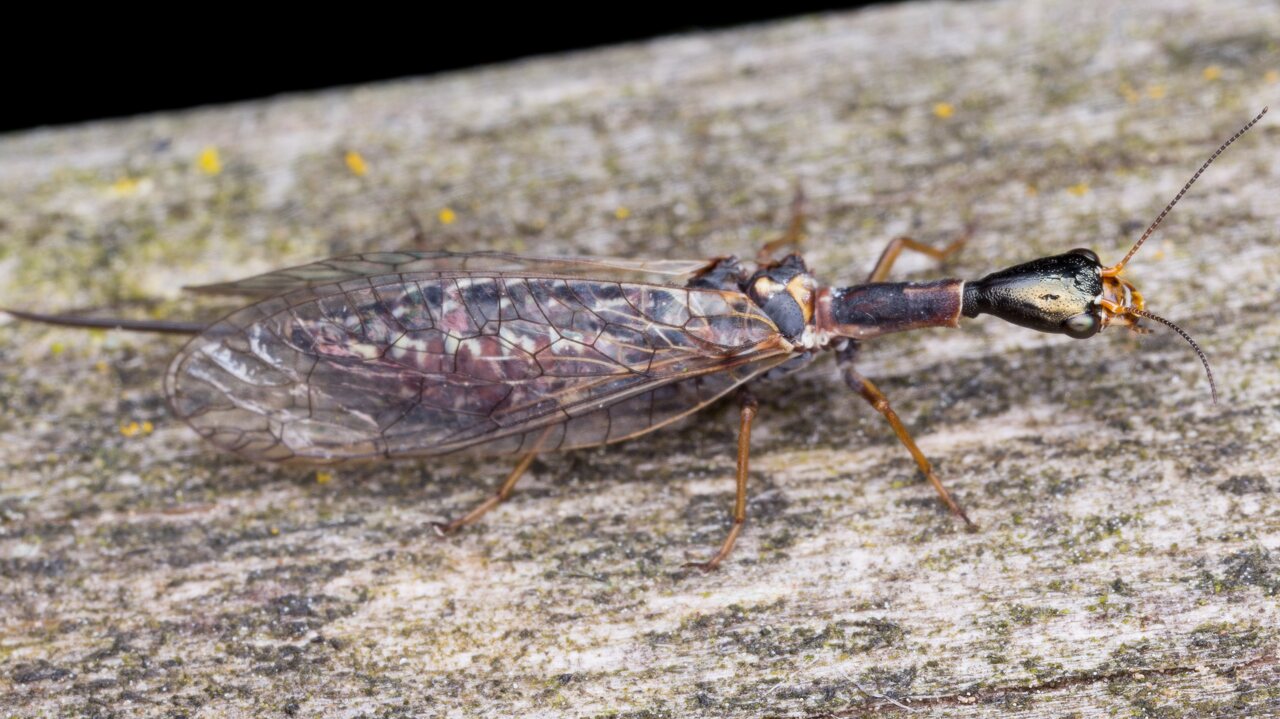
Xanthostigma xanthostigma · blyškiaakis kupriukas
- Gelbgezeichnete Kamelhalsfliege
- Lehväkäärmekorento
- blyškiaakis kupriukas
- Gevorkte geelvlekkameel
- wielbłądka mała
Widely distributed in Central, Northern and Eastern Europe. Length of forewing approx. 9 - 11 mm; pterostigma yellow with one transverse vein; body slender; forechest strongly elongated and freely movable; head flattened. The females of the Raphidiidae are easily distinguished from the males by their long ovipositor.
The diurnal adults of Xanthostigma xanthostigma are mainly found in May and June. The females lay their eggs in cracks in the bark of trees and bushes. After hatching, the larvae live almost exclusively on/under the bark of various deciduous trees and shrubs. They feed predatorily on insects, preferably on hemipterans of suborder Sternorrhyncha. The developmental period of snakeflies of the family Raphidiidae is at least one, usually two or more years. The eggs develop within a few days up to 3 weeks. The number of larval instars is variable. Often about 10 - 11 stages are passed through, but 15 or more are also possible. A period of low temperature is required to initiate pupation. The pupation takes place in spring. The pupal stage lasts from a few days to 3 weeks.
‥
0 comments
Add a comment